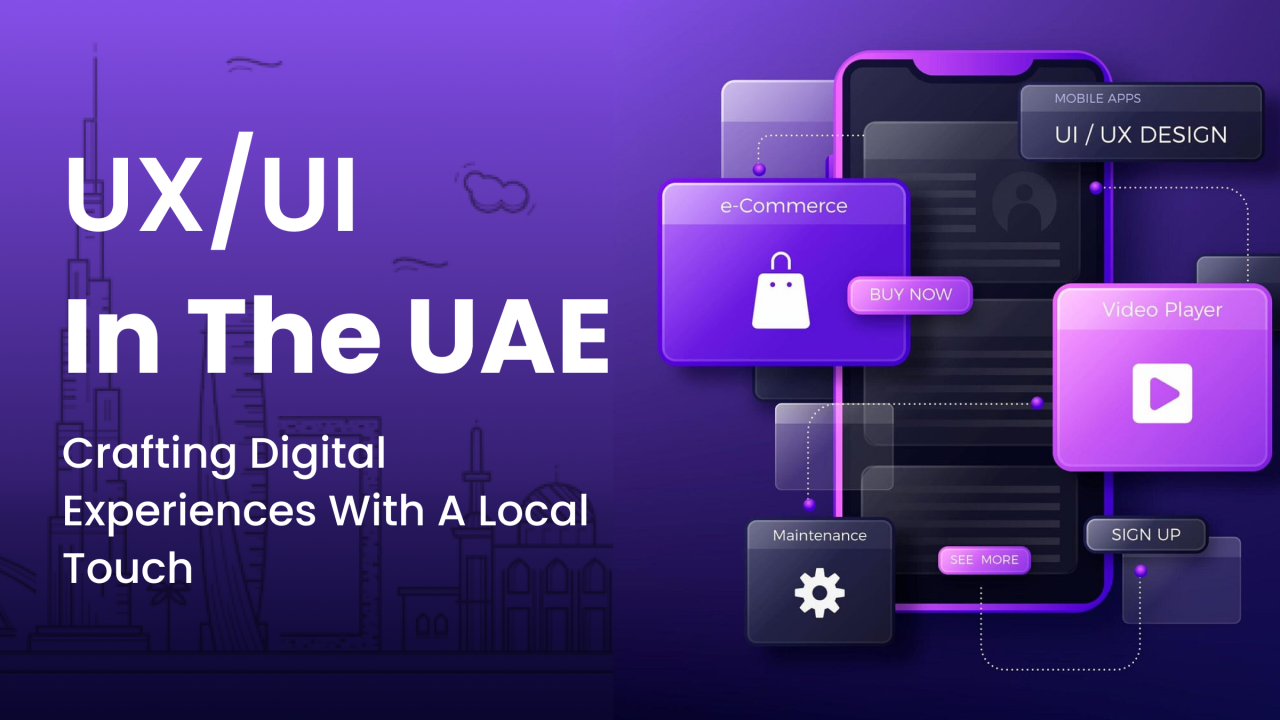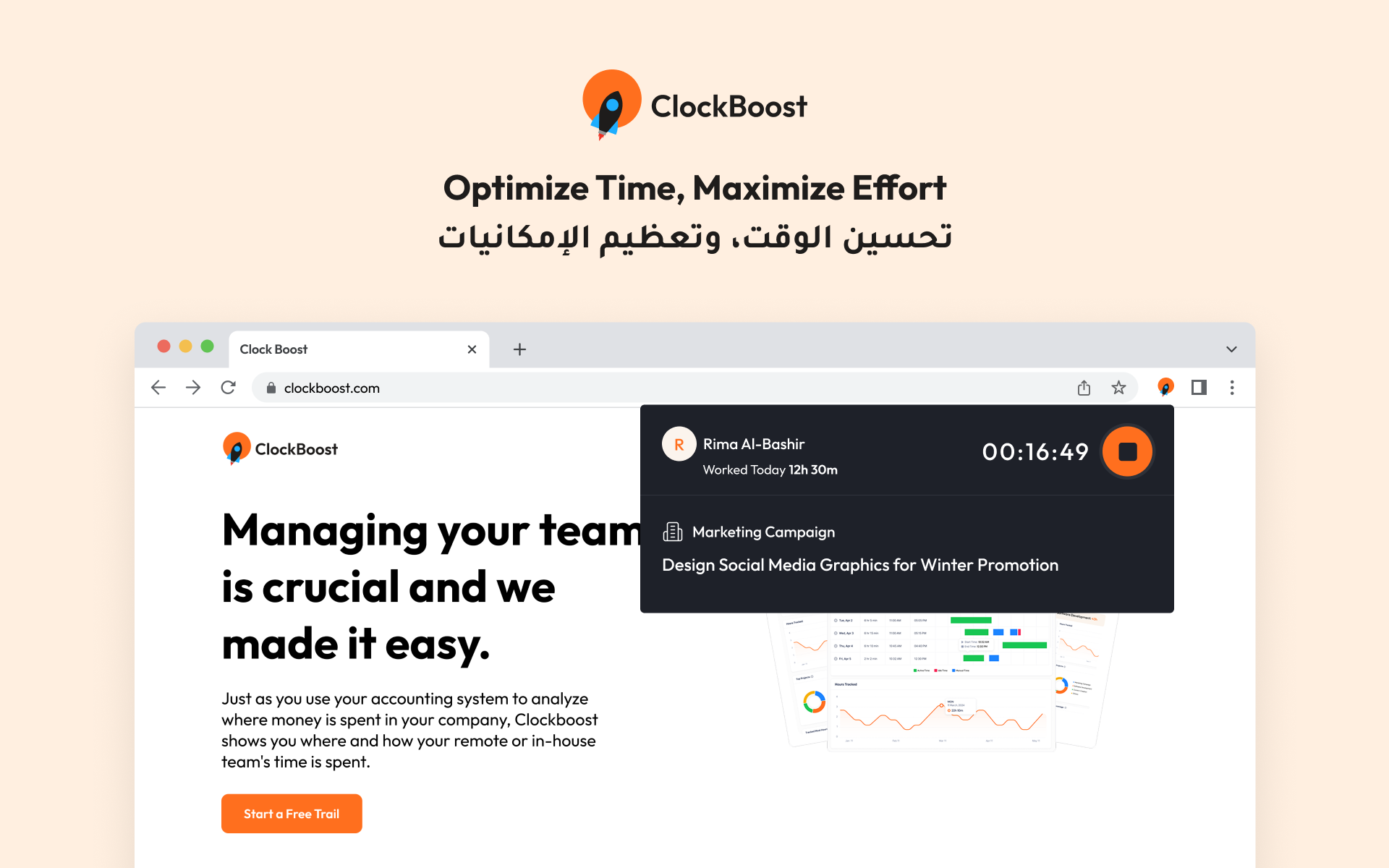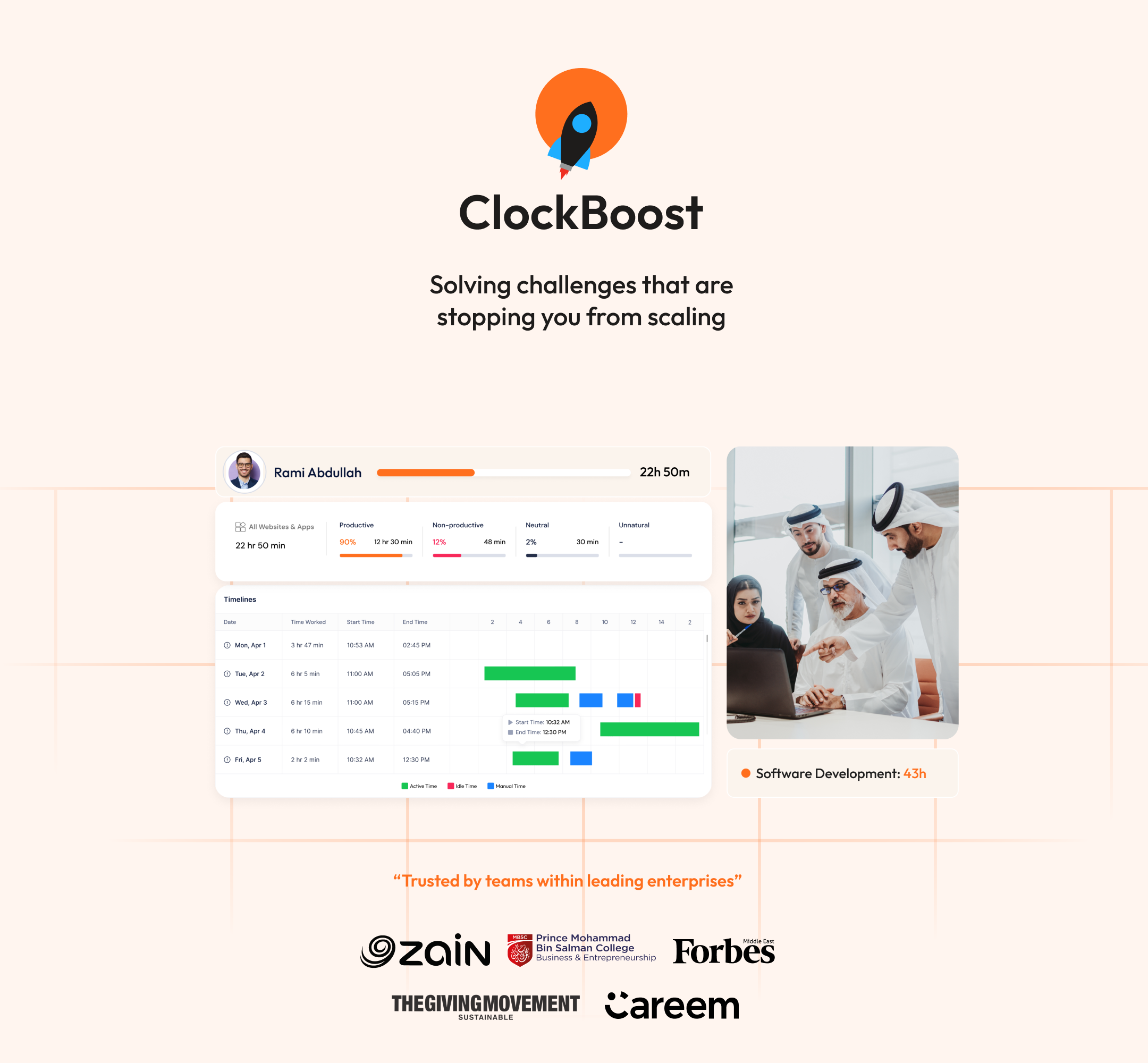
Arabic UX at GITEX: What Gulf Tech Teams Must Fix in 2025
As GITEX 2025 approaches, the Gulf’s innovation spotlight once again turns toward Dubai. For tech teams across the region, this isn’t just an expo it’s a strategic moment to showcase capability, build partnerships, and prove readiness for scale. But amid the demos and dashboards, one common gap still threatens credibility: the absence of Arabic-first UX in tools used by and built for the region.
Whether you’re presenting or preparing your internal operations for Q4 growth, one thing is clear: UX is no longer just a frontend polish it’s a business signal. It tells your users, employees, and investors how serious you are about aligning with the market you serve.
At ClockBoost, we’ve seen this firsthand. As a Gulf-first time tracking and productivity platform, our approach to UX isn’t about translation—it’s about operational trust, cultural fit, and day-to-day usability for remote and hybrid teams across the UAE, Saudi Arabia, and the wider GCC.
Why Arabic UX Still Misses the Mark
Despite the Gulf’s rapid digital transformation, many tech tools remain English-first at their core. Even those that offer language toggles often deliver surface-level localization—literal translations without contextual accuracy, broken right-to-left (RTL) formatting, and help text that confuses more than it clarifies.
At events like GITEX, this disconnect is amplified. Demos built for Western audiences struggle to resonate with Gulf users. Navigation feels foreign. Key workflows get lost in translation. And stakeholders are left wondering: if this tool doesn’t fit our daily operations, how will it support our growth?
The issue isn't language, it’s misalignment. True localization means adapting to how teams work, think, and collaborate. It means reflecting the culture of productivity in the Gulf, not just labeling a few buttons in Arabic.
What Gulf Tech Teams Actually Expect
Localization isn’t a checkbox it’s a trust-building layer embedded into every interaction. Gulf-region tech teams are highly capable, multilingual, and fast-moving. But they operate within unique norms that standard UX often ignores. Here’s what truly matters:
- Arabic-first UI and RTL layout: Interfaces must read and flow naturally, not just swap text.
- Culturally relevant labels and actions: Productivity language—whether task-related or performance-based should reflect regional work habits.
- Flexible calendar and workweek settings: Platforms should accommodate Friday–Saturday or Saturday–Sunday weekends and Gulf-specific public holidays.
- User roles and visibility tailored to local hierarchies: Reporting lines and access levels vary between Saudi, UAE, and Qatari teams. Tools need to reflect that.
- Privacy-conscious transparency: Screen tracking, idle-time logging, and time entry workflows must balance insight with respect, not surveillance.
Without these, tools even with strong core features risk poor adoption. In Gulf enterprises, tools that aren’t used properly become tools that aren’t trusted.
How ClockBoost Embeds Localized UX Into Every Layer
At ClockBoost, we’ve spent the past three years designing for the Gulf region, not adapting to it. Our UX philosophy is built around the idea that remote and hybrid teams in Dubai or Riyadh deserve a platform that feels like it was made for them, because it was.
Here’s how our platform delivers that commitment:
1. Interface in Arabic Built, Not Translated
ClockBoost offers a full Arabic-language interface with native right-to-left (RTL) layout. Our UI elements are tested specifically for Gulf readers, not just flipped from English. Button placement, labels, form logic, and help text are context-aware and intuitive.
This isn't just about clarity, it's about empowering teams to adopt the platform quickly, without needing external support or workarounds.
2. Regionally-Aware Productivity Logic
Time tracking and productivity aren’t universal; they reflect cultural norms. In the Gulf, start times may vary, Friday-Saturday weekends are common, and shorter working hours during Ramadan must be respected.
ClockBoost allows teams to set region-specific workweeks, time zones, and break schedules. Idle-time detection and reminders are designed with these nuances in mind, ensuring accurate, respectful tracking that reflects real work patterns.
3. KPI Dashboards That Fit Gulf Team Structures
Generic dashboards often assume flat team hierarchies or Western-style reporting. ClockBoost dashboards are role-based and customizable, letting HR, team leads, and executives each see what matters most.
For example, a project manager in Dubai can track task alignment and time allocations across teams, while an operations lead in Jeddah can monitor idle time trends and team efficiency over Gulf-standard weeks.
4. Guided Onboarding and Arabic Support
New teams using ClockBoost receive an in-platform onboarding experience that’s not just translated but regionally relevant. Whether it’s explaining time classifications or demonstrating how permissions align with Gulf privacy laws, every step reinforces clarity, trust, and cultural fit.
Arabic-language support is also available during the 3-month free trial, ensuring no team is left to figure things out alone.
5. Transparency Without Surveillance
We know that remote and hybrid work requires trust. ClockBoost includes optional, role-based screenshots and idle-time alerts that can be configured to match each company’s values. These features support accountability without micromanagement, especially important in Gulf workplaces that value professional respect and discretion.
GITEX Prep: Local UX Is the Hidden Advantage
You don’t have to be exhibiting at GITEX to benefit from it. Many partnerships, hiring decisions, and internal audits take place in the lead-up to October. It’s a moment when leaders ask, “Are our systems ready for the next phase?”
ClockBoost helps teams answer that with confidence. Whether you’re onboarding new hires, scaling across borders, or consolidating tools, localized UX sends a message: we take operations seriously, and we understand our market.
Here’s how to use that advantage:
- Audit your current tools: Are your teams working in platforms that reflect their language and structure?
- Roll out ClockBoost now: With a 3-month free trial and no credit card required, it’s an ideal Q3 tool for streamlining operations ahead of Q4.
- Make internal UX part of your credibility story: Investors and partners don’t just want flashy apps they want to see strong, sustainable systems.
Final Thought: In the Gulf, UX Is Operational Strategy
Arabic UX isn’t a design fix; it’s an operations decision. The teams that embrace it early will not only reduce friction but also build faster, scale more confidently, and operate with more clarity across borders.
ClockBoost is built to support that journey. Our platform helps Gulf-region teams track time, improve productivity, and report on performance all in a format that reflects their reality.
If your internal tools don’t match your market, it’s time to change that. GITEX is coming. But even more important is what happens the week after when work resumes, projects grow, and trust is either reinforced or lost.
ClockBoost helps ensure it’s reinforced every day.


























.png)

